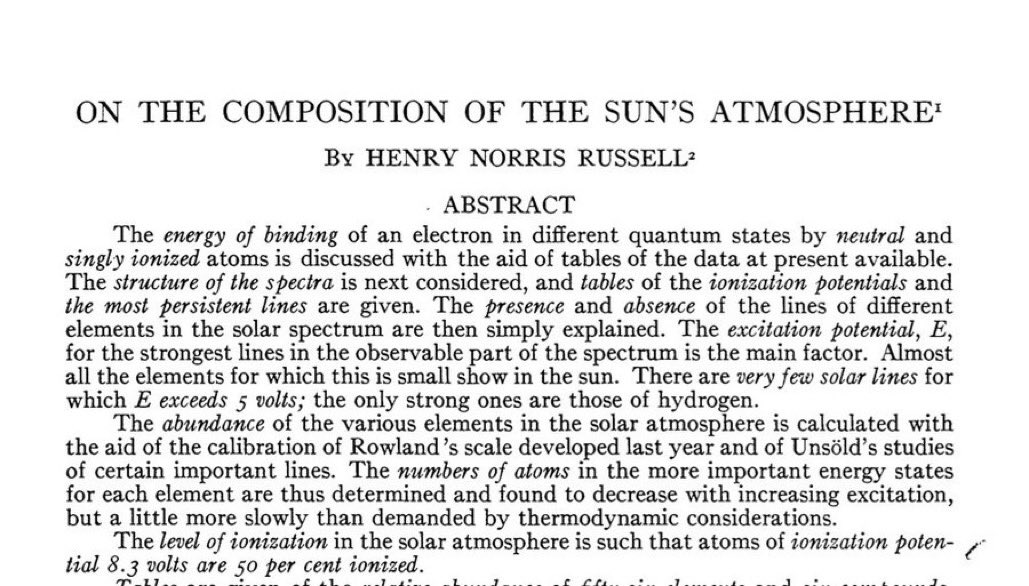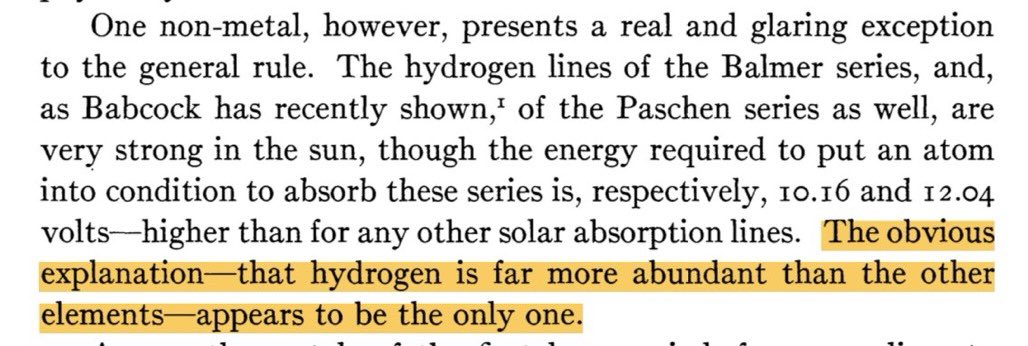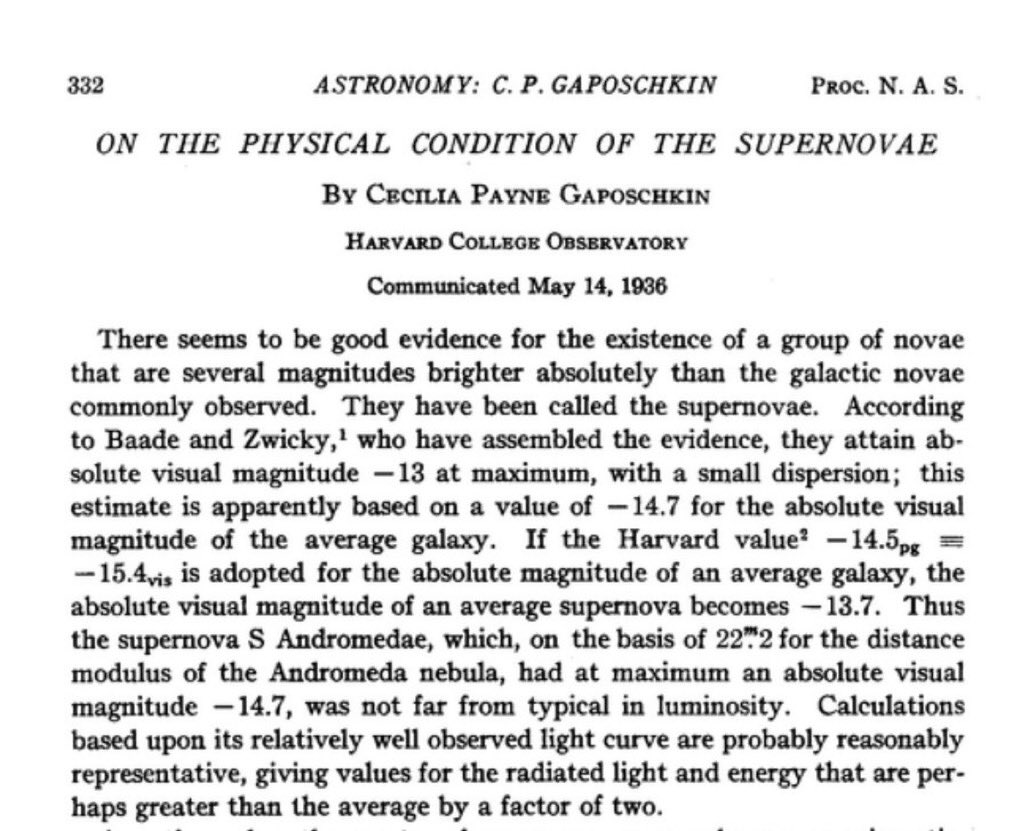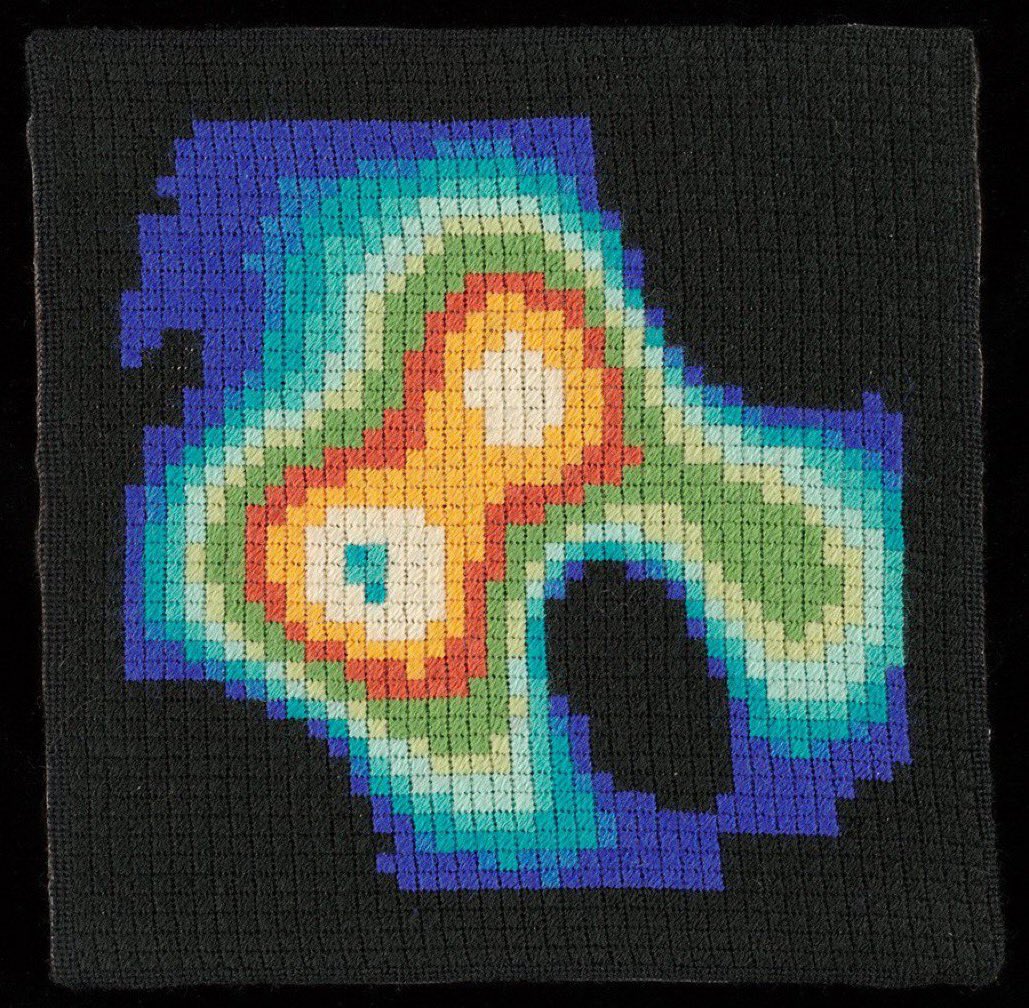Astronomer Cecilia Payne-Gaposchkin was born #OTD in 1900. She decoded spectral lines of stars to deduce their elemental composition (concluding they are mostly H and He) and was the first woman to be made full professor and department chair at Harvard.
Image: Harvard Observatory
Image: Harvard Observatory
Cecilia Payne was born in England, the daughter of a lawyer and a painter who held the radical view that girls should get the same quality education as boys. She excelled in school, and eventually enrolled at Cambridge.
Cecilia began visiting the Cambridge Observatory, and asked the staff so many questions that they fetched Eddington to deal with her. He recommended some books for her to read, but she had already read them all. So he just gave her the run of the observatory& #39;s research library.
(Never doubt the impact that a gesture like that may have on a precocious and motivated student, especially one who may not see themself represented in the field.)
Cambridge still wasn& #39;t awarding degrees to women, so in 1923 Cecilia headed for the US. Harlow Shapley, the new director of the Harvard College Observatory, offered her a graduate fellowship.
(Shapley believed that the Milky Way was the whole universe. In 1924 he received a letter from Edwin Hubble showing that the Andromeda nebula was a separate galaxy. Payne was in Shapley’s office at the time, and he said to her "Here is the letter that has destroyed my universe.")
In her thesis, Payne applied recent developments in quantum mechanics to understand the observatory& #39;s immense catalog of stellar spectra. She estimated elemental abundances in stars, and showed how the spectra were influenced by the amount of ionization at different temperatures.
Payne& #39;s thesis "Stellar Atmospheres" was published in 1925. There is a quote by the astronomers Otto Struve and Velta Zeberg, who supposedly said it was "undoubtedly the most brilliant Ph.D. thesis ever written in astronomy."
http://adsabs.harvard.edu/abs/1925PhDT.........1P">https://adsabs.harvard.edu/abs/1925P...
http://adsabs.harvard.edu/abs/1925PhDT.........1P">https://adsabs.harvard.edu/abs/1925P...
Before Payne& #39;s work, the accepted theory significantly underestimated the abundance of Hydrogen and Helium in stars. Existing models assumed the composition of the sun was similar to that of Earth.
Estimates of the amount of H were made using Balmer absorption. But this involves H atoms in the first excited state. Payne realized that for the 5800K surface temp of the sun only 1 per 10⁸ H atoms are in this state. She concluded that stars were mostly H and He.
Henry Norris Russell, a prominent astronomer, was *sure* Payne was wrong. He convinced her to omit the result from her thesis. A few years later he realized that HE was wrong, and published the result himself.
http://adsabs.harvard.edu/doi/10.1086/143197">https://adsabs.harvard.edu/doi/10.10...
http://adsabs.harvard.edu/doi/10.1086/143197">https://adsabs.harvard.edu/doi/10.10...
I’ve seen several descriptions of Henry Norris Russell “citing” Payne on this result, but reading through his paper my impression is that he did not give Payne nearly as much credit as she deserved for the Hydrogen and Helium abundances.
He cites Payne when discussing heavier elements, but when he arrives at the surprising result on the abundance of Hydrogen — a major discovery — he fails to mention that he convinced Payne to leave it out of her thesis. Maybe I& #39;m missing something, or he gave credit elsewhere.
Anyway, Payne& #39;s work revolutionized our understanding of the composition of the universe. Almost everything out there is hydrogen and helium. The heavier elements we see here on Earth are just a tiny sliver of the total.
Following her PhD, Payne conducted massive surveys of bright stars, and worked on both variable stars and supernovae.
From the time she finished her PhD until 1938, Payne& #39;s title was "technical assistant" to Harlow Shapley. She performed all the duties of a Harvard professor, but women were not officially promoted to that position. In 1938 she was given the title "Astronomer."
Finally, in 1956 she became the first woman promoted to Full Professor at Harvard. That same year she became the first woman to head a department at Harvard, when she was appointed Chair of Astronomy.
“There is no joy more intense than that of coming upon a fact that cannot be understood in terms of currently accepted ideas."
— Cecilia Payne
— Cecilia Payne
Important addendum:
Payne worked with a friend to make a needlepoint of the Cassiopeia A supernova remnant.
https://www.brainpickings.org/2017/05/10/cecilia-payne-supernova-needlepoint/
Image:">https://www.brainpickings.org/2017/05/1... Harvard University Archives
Payne worked with a friend to make a needlepoint of the Cassiopeia A supernova remnant.
https://www.brainpickings.org/2017/05/10/cecilia-payne-supernova-needlepoint/
Image:">https://www.brainpickings.org/2017/05/1... Harvard University Archives
There’s a recent biography of Cecilia Payne-Gaposchkin that’s supposed to be great.
@ScienceNews reviews “What Stars Are Made Of”: https://www.sciencenews.org/article/cecilia-payne-gaposchkin-revealed-stars-composition-broke-gender-barriers">https://www.sciencenews.org/article/c...
@ScienceNews reviews “What Stars Are Made Of”: https://www.sciencenews.org/article/cecilia-payne-gaposchkin-revealed-stars-composition-broke-gender-barriers">https://www.sciencenews.org/article/c...

 Read on Twitter
Read on Twitter







